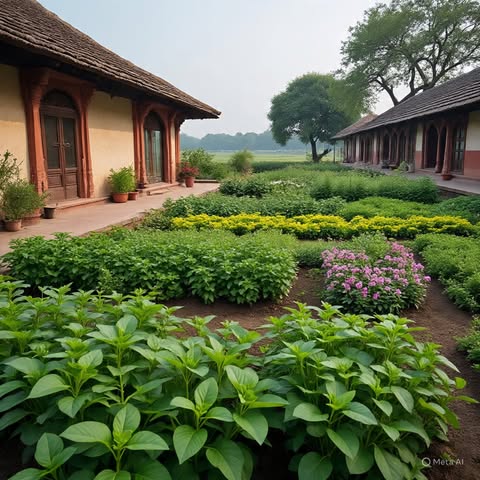Why mantras matter in practice
Mantra practice is often presented as mystical shorthand for deep transformation. In reality, a responsible mantra practice is simple: repeat a sound or phrase with attention, breath, and intention. The point is not supernatural guarantees — it is the steady shaping of attention, breath rhythms and the nervous system. At VividAshram we teach beginner-friendly mantras with an emphasis on ethical use, clarity of source, and safe integration with existing medical or psychological care.
Choosing a mantra — simplicity and lineage
Select a short, repeatable phrase. Traditional mantras (for example "Om Namah Shivaya" or the Gayatri in its full form) come from long practices and lineages; where we teach them, we also share origin, context and recommended pronunciation. If you are new, choose short seed-mantras that focus attention and are easy to repeat quietly or silently. If you prefer secular wording, use a short phrase of intention in your language ("calm breath," "softening," etc.).
Practical how-to for beginners
- Set a short, consistent time: five to ten minutes daily at first. Consistency matters more than length.
- Find a comfortable seated position (chair is fine). Keep the spine gently upright.
- Begin with a few slow breaths to settle the body and nervous system.
- Repeat your chosen mantra silently or softly on the out-breath. Match the breath: one repetition per breath is easiest for beginners.
- If the mind wanders, return kindly. The practice is the return, not perfection.
Safety, integration, and contraindications
Mantra practice is generally safe — but it can stir emotion, memory, or unexpected sensations. If you have severe trauma history, a current psychiatric diagnosis, or are under active psychiatric medication, consult a mental health professional before intense or long silent practices. Start gently and tell a supportive teacher if you feel disoriented. We also recommend coupling mantra with grounding activities (short walks, gentle stretching, and a plan to reach out for support if intense material emerges).
Evidence and modern context (citations)
Modern research suggests meditative repetition and focused-attention practices alter attention networks and stress physiology. See an overview at the World Health Organization on mental health and community interventions for context. For contemplative neuroscience perspectives, consult peer-reviewed summaries such as review articles in journals of psychology and mindfulness practice.
References: World Health Organization; PubMed (searchable reviews).
How to place mantra in daily life
Use micro-practices: a single breath and a mantra at the start of each meal, a short repetition before bed, and a quiet repetition before a stressful meeting. Over time you can lengthen sessions. Keep a practice journal for five minutes per week to note patterns — what calms you, what activates emotion, and how your attention shifts.
Teacher & lineage signals
When possible, practise with a teacher who can offer pronunciation, history and ethical framing. At VividAshram we offer beginner mantra sessions during weekend retreats and maintain short teacher bios and training records to support credibility.
— Written by Debesh Ranjan. For more about teacher credentials and workshops see the founder profile.
This article — "Practical Mantra: A Beginner's Approach" — is part of our ongoing effort at VividAshram to share practical, trustworthy guidance on holistic living. Our approach blends the classical teachings of Ayurveda, the practical discipline of yoga, and modern approaches to wellbeing so readers can apply these ideas safely at home.
Wherever relevant, we provide links to our services and resources: see our About page for background on the teachers, Ayurveda Shop for carefully prepared herbal formulations, and Offerings for retreats and in-person programs that reinforce practice.
Please treat the content here as educational and introductory. We avoid medical claims and urge anyone with health concerns to consult a qualified practitioner. For tailored guidance you can request a personalized consultation through our Contact page.
We aim for clarity and usability: each product or practice page includes ingredients, usage notes, and helpful cautions so you can make an informed choice. If you find this article useful, consider supporting our community through donations or join our upcoming retreats.






